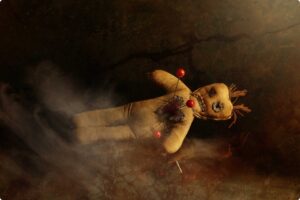Alkmaar, famous for its iconic cheese market and picturesque canals, holds a lesser-known and intriguing past: its connection to ‘witchcraft. In the late Middle Ages and early modern period, fear of witchcraft gripped Europe, and Alkmaar was no exception. The city’s history includes tales of superstitions, trials, and societal tensions that shed light on how communities confronted the mysterious and unknown.
What is Witchcraft?
In medieval and early modern Europe, ‘witchcraft was often linked to a pact with the devil. Witches—typically women—were accused of using supernatural powers for harmful purposes. Seen as a threat to both society and religious order, witchcraft symbolized rebellion against the established power structures.
In Alkmaar, as elsewhere, accusations of witchcraft often stemmed from social disputes, jealousy, or fear. Outsiders, such as healers or those with unconventional lifestyles, were particularly vulnerable to suspicion.
Witchcraft in Alkmaar: key events
While Alkmaar was not a major center of witch persecution, notable trials and events marked the city’s history. Here are some highlights:
Accusations and arrests
Witchcraft accusations in Alkmaar usually arose in tight-knit communities. A mere rumor or unexplained misfortune could lead to an arrest. Accused individuals were subjected to intense interrogations and, in some cases, torture, to extract confessions.
The trial by water
In the Netherlands, the infamous ‘water trial’—a controversial method of determining guilt—was used occasionally. The accused were thrown into water: floating indicated guilt, while sinking suggested innocence. Though less common in Alkmaar than in other parts of Europe, it remains a striking symbol of the fear-driven justice system of the time.
The Alkmaar legal system
Alkmaar adhered to the relatively lenient Dutch legal standards of the 16th and 17th centuries. Compared to other European regions, Dutch courts were more cautious about convicting individuals without solid evidence, and many accused witches were acquitted.
Punishments
If convicted of witchcraft, punishments ranged from fines and public humiliation to execution, usually by hanging or burning. However, executions in Alkmaar were far less frequent than in witch-hunt hotspots like Germany or Switzerland.
The story of Trijn Rembrands
One of Alkmaar’s most enduring witchcraft legends revolves around ‘Trijn Rembrands’, a woman accused of witchcraft in the 16th century. Known for her eccentric behavior, she became a target of suspicion in her community. Despite the lack of evidence, her trial became a focal point of local lore. Remarkably, Trijn was acquitted, and her story remains a testament to the paranoia and societal dynamics of the era.
The decline of witchcraft accusations
By the 18th century, attitudes toward witchcraft began to shift in Alkmaar. The rise of the Enlightenment and its emphasis on reason and science helped dispel superstitions. Witchcraft came to be viewed as a relic of ignorance, and the harsh punishments of earlier centuries faded into history.
Witchcraft in Alkmaar today
While the witch hunts are long gone, the legacy of ‘witchcraft in Alkmaar’ lives on in stories, legends, and cultural memory. The city embraces this darker chapter of its history through:
Museums and archives: visitors can explore exhibitions and records that illuminate this fascinating period.
Folklore events: local events occasionally draw on Alkmaar’s witchcraft legends to highlight the social fears and beliefs of the past.
The history of ‘witchcraft in Alkmaar’ reveals a time when fear of the unknown influenced justice, community dynamics, and social norms. Today, while the city is best known for its vibrant cheese market, this hidden history offers a deeper, more complex understanding of Alkmaar’s cultural heritage.
Are you interested in the history of Alkmaar? Take a look at the selfguided-tour: SmartWalk Alkmaar to learn the city better and explore all the hidden gems Alkmaar has to offer!








